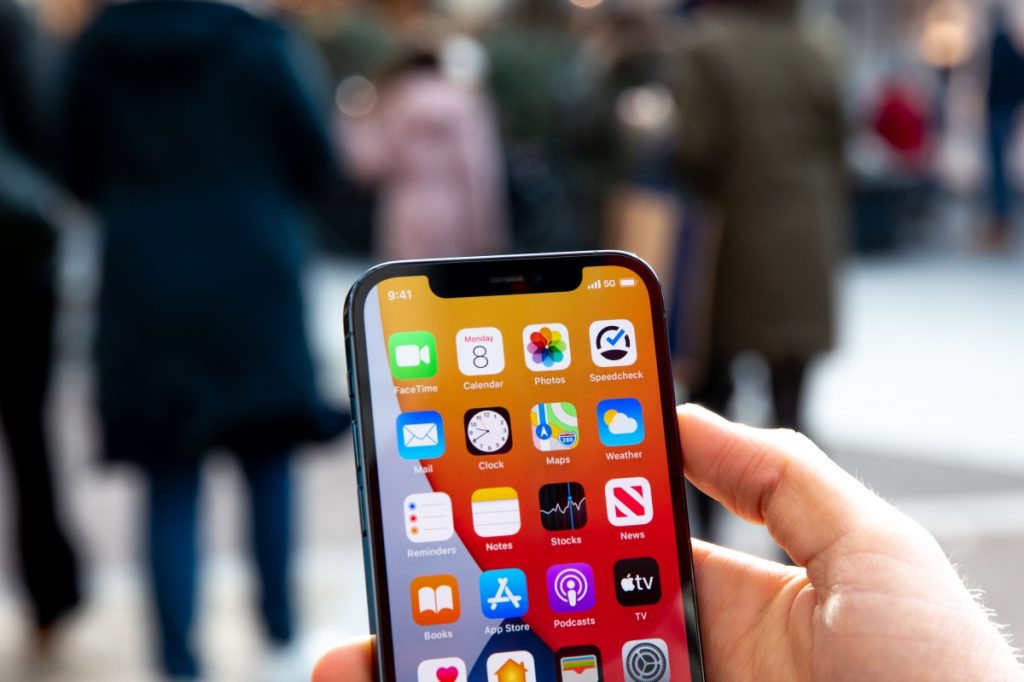
In part 1 of our look into digital transformation trends in 2022 we focused on remote work, the talent war and how recruitment is changing and how enterprise AI services can speed up digital transformation projects.
This week we go a little bit deeper. We will look at technical innovations, like 5G and how they present challenges and opportunities for digital transformation projects. We will also look at organizations more widely and how they need to embrace agility to quickly adapt to rapidly changing customer needs.
Let’s get started.

Digital Transformation Trends 2022 – 5G Technology
5G is already here. Depending on where you live, you have probably seen a lot of advertising from mobile network service providers trying to get you to sign up to a new plan.
But 5G has enormous potential, not just for consumers. It could revolutionize how we work, how we shop and how we connect to each other. While previous innovations like 4G focused on doing things faster, 5G promises to connect people to everything in a unified way.
For businesses looking to serve their customers, this is massive and will require even bigger digital transformation projects. Just one example, the last few years has seen a massive increase in online video consumption which has informed the type of content companies produce to reach new customers. Video now accounts for 63% of all mobile traffic and may rise to 76% by 2025 and most brands use video in their marketing materials. 5G promises a shift into even more immersive forms of content, like Virtual Reality (VR), Augmented Reality (AR) and even Merged Reality (MR). The data demands of these mediums has often meant that they become edge case curiosities in the home entertainment space. But 5G will bring these technologies not just to the consumer mainstream, but also to industry.
The Impact of 5G
5G will impact almost every aspect of today’s companies and how they do business. The supply chain will have the ability to track the movements of goods and data in real-time through every stage of the supply chain. Mission Critical Services (like server structure) will be much more reliable. The full potential of the Internet of Things (IOT) will also explode. Needless to say, the impact of 5G technology on digital transformation projects will be significant.
The combination of the potential impact of 5G technology with current pandemic driven market shifts is going to change the world. Seismic disruptions are afoot in the manufacturing and eCommerce sectors. Working from home will become an even more connected experience and the tele-health/online medical sector will explode due to the increased take up of IOT technology.
The Economics of 5G
In macroeconomic terms, the numbers being talked about are staggering. IHS Markit has forecasted that 5G investment in seven countries (China, United States, Japan, Germany, South Korea, France, and United Kingdom) will average over $260 billion annually. With 22.8 million new jobs being generated by 2035.
So if you are working on a digital transformation project now and are not assessing what impact 5G technology could have, it really is time to start.
Challenges 5G Could Face
There are possible headwinds that 5G could face on both the supply side and the demand side. The digital divide between urban and rural populations, as well as the gap between developed and developing countries could slow 5G down. Affordability is also a factor, despite consumers driving the demand for better data services on the supply side. 5G is still expensive.
On the supply side, manufacturing businesses do not always have the skills or business model flexibility to make the most of 5G right now. Which leads us into talking about the need for more flexible, agile organizational models…
Actions You Can Take:
- Try to anticipate the impact that 5G could have on different areas of your business, from sales all the way through to operations
- If you create content, 5G opens up a totally new landscape to operate in; Think about how you can harness this potential
- IOT will explode once 5G takes hold; Think about how this could impact your business

Digital Transformation Trends 2022 – Organizational Agility & Flexibility
As stated above, 5G is a huge disruptor. This disruption does not end with consumer behavior or the internet of things.
It extends to “how” organizations do business and what those organizations might look like post-pandemic and mass 5G adoption.
Using 5G as an example, many organizations in manufacturing have always had capital expenditure budgets for purchasing operational technology (OT). They have a sum of money to pay for technical infrastructure, hardware and so on.
These manufacturing companies are often not used to operating expenditures in this area. They may not have experience in paying recurring fees. This is before taking into account the skills gap 5G implementation in manufacturing could bring. For example, these organizations may not have capable data analysts that can make the new data from every step in the supply chain actionable.
So while a big manufacturer can install their own private 5G network, it’s unlikely they will be able to avoid recurring expenses. They will need system integrators, analysts and other third-party specialists.
The answer to this would usually be to bring all of this in-house, but as discussed last week, talent acquisition in tech is very expensive and specialists are in-demand.
So what should they do?
The answer lies in flexible budgeting and agile business models for both industrial companies and suppliers.
At MAQE we are currently implementing our version of the Rendanheyi model. At its core Rendanheyi is a flexible, adaptable organizational structure where a larger organization is composed of smaller microenterprises. Each microenterprise then (eventually) operates as its own business.
An organizational model such as rendanheyi, or something like it, gives more flexibility to both large industrial manufacturers (Haier created the system) and even their third-party suppliers. Decentralization empowers businesses and makes them more agile. Smart billing between various micro-enterprises could, for example, speed up a 5G digital transformation project.
If you are about to embark on a large-scale digital transformation project, organizational transformation should be part of that. If you need a third-party specialist to help, feel free to get in touch with us via [email protected]!
Reading some of our organization transformation content could also help you get started.
Actions You Can Take:
- Begin to break down silos in your organization
- Digital transformation is not limited to projects that benefit your customers; Changing your organizational structure can benefit your staff too!

Digital Transformation Trends 2022 – A Sharper Focus On Sustainability & Corporate Social Responsibility (CSR) Policies
Many forward thinking organizations know that sustainability and a strong CSR policy can result in incredible marketing gains, increased staff engagement and more profits.
But becoming more sustainable can be a huge transformation for many businesses. Digital is key to that, so teams in charge of digital transformation projects will be affected. For C-suite executives allocating resources, it would be tempting to sacrifice sustainability drives for something like a big 5G implementation and transformation project.
But is there a way you can do both? Edy Susanto, Director at Microsoft, Cloud & Enterprise Business, posted on LinkedIN last year that “digital transformation is the key to sustainability”. Edy Susanto suggests that sustainability should be a KPI on any digital transformation project. For example, if you were changing your organizational structure and changing the customer experience journey, how would that impact sustainability efforts. There are numerous tools out there to help your organization calculate its carbon footprint. So in future digital transformation efforts should tie directly to sustainability.
Actions You Can Take:
- Can you make sustainability a KPI on your digital transformation project?
- Do you have a strong CSR policy in place? If not, start to put one together!

Digital Transformation Trends 2022 – Low & No Code solutions
It is fair to say low code tools have not always been popular with developers.
But democratizing programming is essential for digital transformation. Not just for saving developers time by making “easier” tasks less time-consuming. It’s essential because purely relying on in-house professional developers is unsustainable for most businesses. There is just too much work, too many digital transformation projects and it is harder and harder to recruit developers.
Digital transformation projects need low code tools so non-developers can help to solve some of the computational problems the project presents. This is not to say devs are obsolete, they are more in-demand than ever. But Developers are a precious resource that should be preserved for complex problems that low code tools cannot solve.
If you are on a digital transformation project and not using tools like Airtable, you should think about the aspects of your digital transformation project that could be aided by low code tools. This may be a challenge, but it could also speed up the project and preserve your already stretched development team!
Actions You Can Take:
- Use low code tools for simpler tasks in your project where possible
- This speeds up your project overall and helps prevent developer burnout

Talk to MAQE
If you need a third-party specialist to help with your digital transformation project, talk to MAQE. We have a lot of experience in organizational transformation and we have the development knowledge to help you adapt and integrate new technologies, like 5G, into your business. Get in touch via [email protected].
